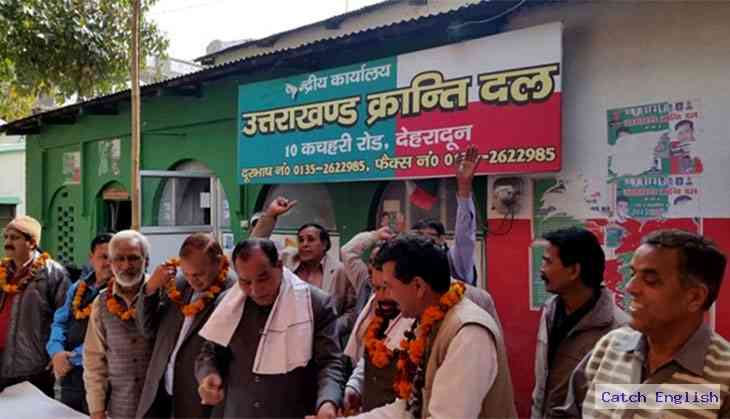UKD's campaign to save village habitat exposes how Uttarakhand has gone wrong

Uttarakhand's only regional force –-Uttarakhand Kranti Dal (UKD) has just concluded a public outreach campaign under its 'Gaon Basao Rajya Bachao' programme. The party may or may not benefit electorally from this drive as it stands on the margins of the state polity at present but this programme has been successful in underlining the political crisis in Uttarakhand in context of the continuing emigration and people abandoning their homelands.
Village after village continues to be abandoned by its residents in search of employment and livelihood. There are several villages here one can only come across the elderly. There has been a collective failure of the respective governments that have come to power in this hill state since its inception to curb this phenomenon. There are serious security implications too of this continuing trend as the villages along the border see massive emigration.
The UKD carried out its programme in all the 13 districts of its three main geographical regions of the Terai, Garhwal and Kumaon through a Rath Yatra..
Party leader Trivendra Panwar pointed that the inability of the people to get proper education, health and other basic facilities like transport along with poor road connectivity is responsible for the people abandoning their villages. Another major reason is the large scale unemployment. Uttarakhand is one of those states in the country where a major chunk of the population continues to survive on money order economy run on the contributions of the youth enrolling in defence and para military services.
Demonetisation and shoddy implementation of the Goods and Services Tax (GST) by the Narendra Modi led government at the centre has further added to the unemployment in the state.
“More than 3000 schools have shut down in the last 18 years since the state came into existence and the condition in government hospitals is such that there neither do they have doctors nor the medicines,” Panwar said.
Party spokesperson Sunil Dhyani said, “We are organizing a two day meet at Gairsain on July 24 and 25 to discuss our findings during the drive. We have got a positive response from the people and we will chalk out our future course of action after this meet.”
UKD's programme needs to be seen in the light of the interim report of the Rural Development and Migration Commission that was released a couple of months back by the Chief Minister Trivendra Rawat that itself paints a worrisome picture of the state.
The vice president of the Commission SS.Negi said that a survey of 7950 gram panchayats was conducted in January and February 2018 wherein the commission team members toured all the districts of the state and consulted the people and talked about various aspects of rural development and migration.
The survey said that the main occupation of the people at gram panchayat level is agriculture and labour with their figure standing at 43 per cent and 33 per cent respectively. The report pointed that in the last 10 years, 3,83,726 people from 6338 gram panchayats have migrated temporarily. They visit their home but live outside the state for employment. During the same period, a total of 1,18,981 people of 3946 gram panchayats have migrated permanently.
The report further says that 50 per cent people of gram panchayats have migrated due to problem of livelihood and employment, while 15 per cent for education and eight per cent for lack of medical services. Also, 42 per cent youth in the age group of 26 to 35 have migrated from gram panchayats, whereas the figure for age group above 35 years and below 25 years stands at 29 per cent and 28 per cent, respectively.
Negi disclosed that 70 per cent people from the villages migrated to various places within the state, while 29 per cent went outside Uttarakhand and around one per cent have gone abroad.
The report says that after 2011 census, 734 revenue villages or hamlets of the state have no population. Out of these, 14 are located within five kilometres of aerial distance from international border. There are 565 revenue villages or hamlets that witnessed 50 per cent decrease in population after 2011. Out of them, six are located within five kilometres of aerial distance from international border.
While releasing the report Trivendra Rawat said that providing new opportunities of employment in villages, quality education and best health facilities, is the main target of his government. Through all this, migration can be stopped in an effective manner. He went on to list the initiatives that his government has taken.
He claimed that NCERT syllabus has been introduced in the schools and emphasis is on recruiting more doctors. He also underlined how tele medicine is helping improve the health facilities and intensive care units are being established in hospitals in far flung areas.
But such claims have been made by his predecessors too. It is time all the political forces in the state start thinking seriously on how to mitigate this problem of large scale emigration. Many observers are of the opinion that what is required in central intervention in the form of a separate policy for the Himalayan states which is implemented with sincerity. Till that is done the number of ghost villages in Uttarakhand at least are set to increase bringing more concern and embarrassment to the government.


